
Crafting a Smart Omnichannel Marketing Plan for Global Brands in 2023
22 March 2023 | Ava Ye & Shy L | 7 min read
What approach should you take when the way people purchase things has evolved and changed these days compared to 10 years ago? Do you know what Omnichannel marketing is?
Currently, online presence has become more crucial; customers are not only limited brick-and-motor stores, and they have more choices than ever.
The UK is one of the most advanced e-commerce markets in Europe, and in 2022, it had an estimation of around 60 million users. Moreover, there is a growing trend toward online shopping in the UK.
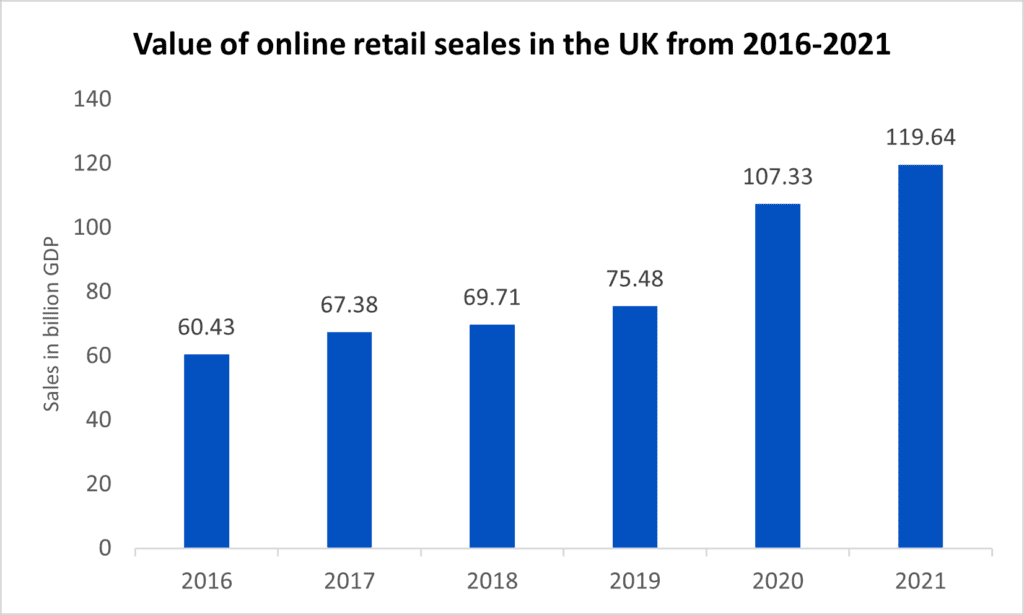
Most brands have online and offline presence in multiple approaches, so how do you leverage these approaches to market efficiently to your clients is the essential step to success?
You leverage using omnichannel marketing.
- What is omnichannel marketing?
- What will the omnichannel user experience looks like?
- Why do global brands need to adopt an omnichannel approach?
- How to Achieve Marketing Success with a High-Performance Omnichannel Plan
- Check out these brands that are killing it with their omnichannel marketing strategies:
- How important is it for global brands to shape their omnichannel strategy around individual market needs?
- When to rethink your omnichannel strategy?
- Future of omnichannel marketing
What is omnichannel marketing?
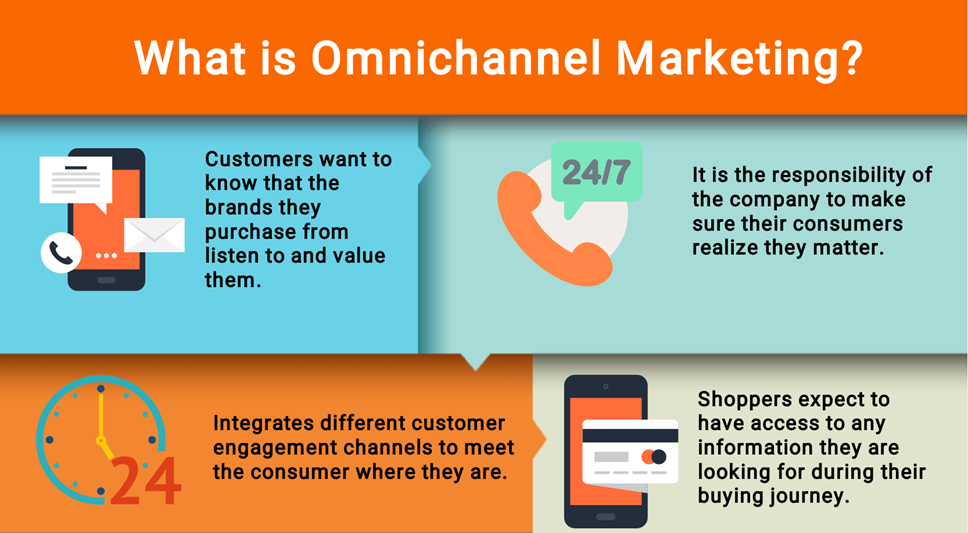
Omnichannel marketing strategy utilises multiple channels to engage and focus on customers and considers all current and past customer interactions who purchase across all touchpoints.
Omnichannel is more customer-centric compared to multi-channel; — the channels are not only parallel but also synced. As a result, companies can monitor and analyse more effectively when guiding customer journeys.
In short, the main goal is to offer a consistent, cohesive brand experience regardless of what channel customers choose to interact with your brand.
What will the omnichannel user experience looks like?
One day a shopper discovers a product on social media and clicks through to the brand’s website to view product details, ratings, and reviews.
Although they add the item to their cart, they get distracted before purchasing. Then, a couple of days later, they receive an email from the store reminding them of the item and offering an incentive such as free shipping or a discount.
The shopper completes the purchase with an in-store pickup while the brand’s website allows the shopper to download their mobile app for real-time updates. Then, they pick it up from the store.
After a few weeks, the brand advertises similar products to the shopper on their social media feed or through the email newsletter they signed up for, introducing new products.
In the meantime, the brand reaches out to ask for their opinions and reviews about the purchase and product experiences.
You can see from above, omnichannel marketing develops the seamless transition between channels and creates a unified brand experience.
Why do global brands need to adopt an omnichannel approach?
Modern customers’ expectations of going through a seamless omnichannel journey have increased significantly. In addition, customers expect to pick up where they left off between different touchpoints is crucial for today’s consumers: A study by Accenture found that around 90% of customers use three or more channels when interacting with a company. Moreover, research from Google found around 85% of customers switch between devices when shopping online.
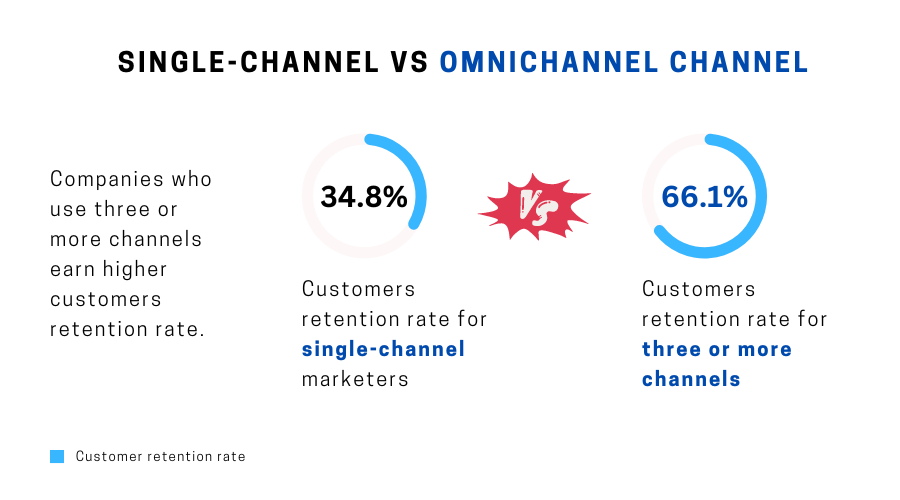
It is clear that a significant portion of customers engages with companies across multiple channels.
Moreover, COVID-19 is a fuse to accelerate modern customers to buy online. Customers are after style, more experiences and more connections. The numbers show that customers are paying more and developing brand loyalty for companies they engage with across three or more channels.
Therefore, companies that fail to deliver will stop writing their history and be left behind. It is not hard for customers to change their minds.
What benefits can omnichannel marketing bring to the company?
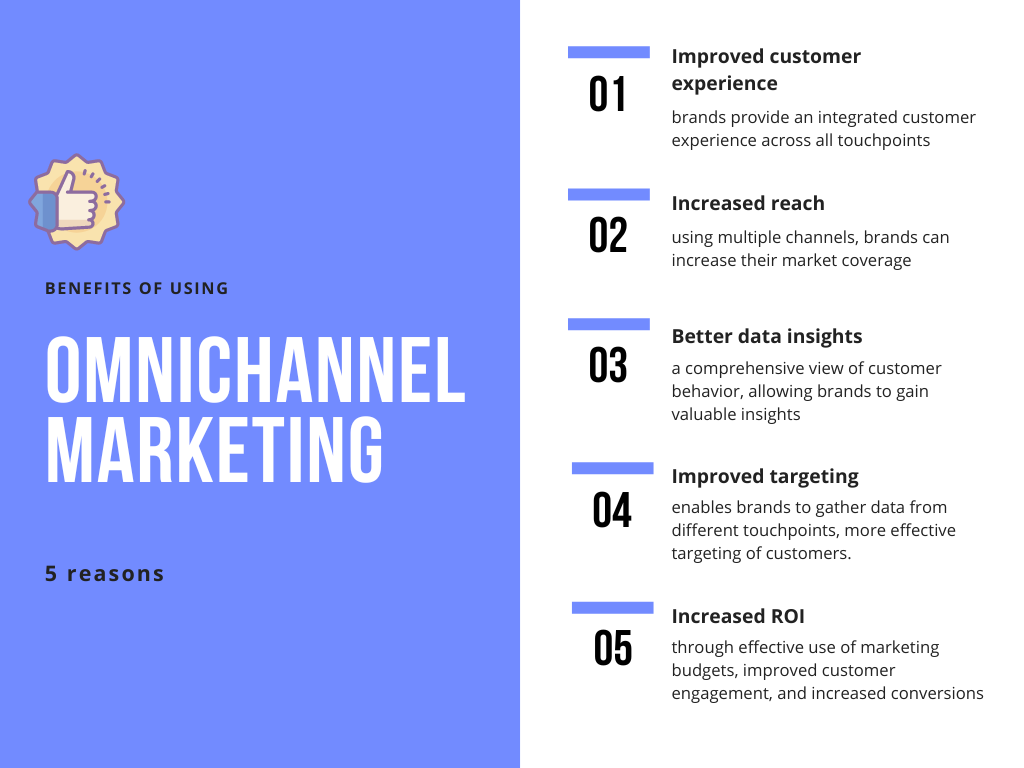
Using an omnichannel strategy in your marketing is crucial because it helps you connect with customers in the way they are the most comfortable with.
With an omnichannel strategy, you can engage with customers across various touchpoints – like social media, email, mobile app, and in-person interactions. This leads to stronger relationships and more loyal customers -because they appreciate your consistent and seamless experience.
Plus, you can reach new customer segments and grow your business. By using customer data and insights effectively, you can better understand their behaviour and tailor your marketing efforts to their needs. This leads to a personalised experience that’s more likely to drive engagement and conversions.
According to MuleSoft, omnichannel customers spend 15-30% more than single or multi-channel customers. Customers are ready to interact with your brand; purchasing through any channel presents a tremendous opportunity.
However, the challenge is meeting the customers demands that are reaching out to your brand on different platforms. Are you ready for it?
How to Achieve Marketing Success with a High-Performance Omnichannel Plan
Are you convinced to adopt omnichannel marketing in your communication strategy now? As we said, having an omnichannel marketing plan helps companies ensure that every customer interaction is consistent, relevant and adds value.
This guide will delve into the key steps to create a high-performing omnichannel marketing plan that delivers results and drives marketing success. From identifying your target audience to measuring the impact of your efforts, we’ll cover it all.
KNOW your target customer
First, when creating a marketing strategy, you should not consider what your company
should offer to “all” customers but what target audience you should approach/contact.
Who are they? What do they care about? What platform do they use the most? What
service or product could you help them with their pain points? It is not about the offline or
online approach; it is about what your UVP (unique value proposition) suits and offers
them.
For example, a global athletic footwear brand wants to target fitness enthusiasts and
athletes. After conducting marketing research, the brand finds out that these consumers
are looking for high-performance footwear that can withstand the demands of their active
lifestyle.
Therefore, the brand’s target customers are those athletes or fitness enthusiasts who
value high durability in their footwear. Based on this insight, the brand can create a UVP
emphasising its high-performance and durable footwear. They can use this UVP in their
marketing and advertising to attract their target audience and stand out from competitors.
Remember, each experience the customers contact or expose with your brand should
always tie back to how your UVP will fix customers’ pain points.
EXECUTE customer segmentation
Now that you know your target customers, it is time to segment them into different groups
to target each group effectively. For example, in the following image, you will know
customers feel frustrated when they receive irrelevant information.
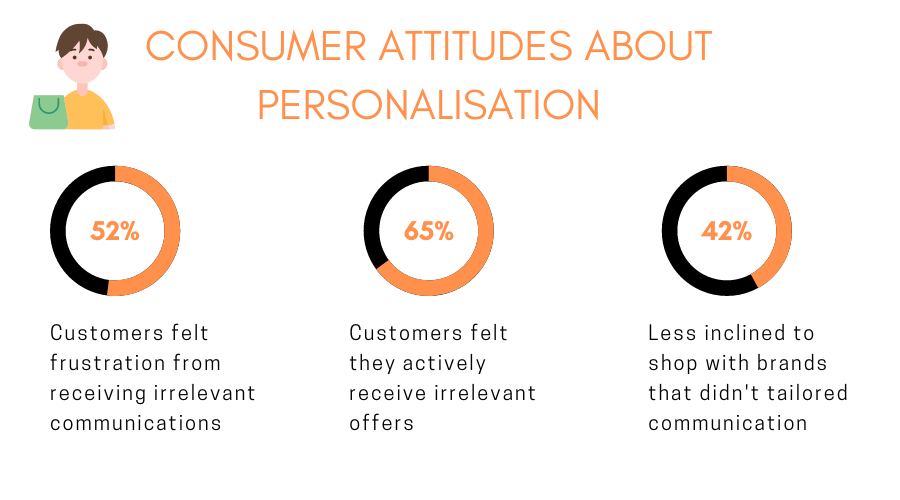
Therefore, tailoring your content to the segmented audience is a must. It is an effective
way to personalise your service and product to the right customers.
You can choose multiple options to segment your audience from geography, gender,
previous purchase experience/ interests, personality, values, engagement level, etc.
Segmentation allows you to meet your customers’ needs and set up the behaviour triggers
in different events.
MAP your customer journey and purchase behaviour
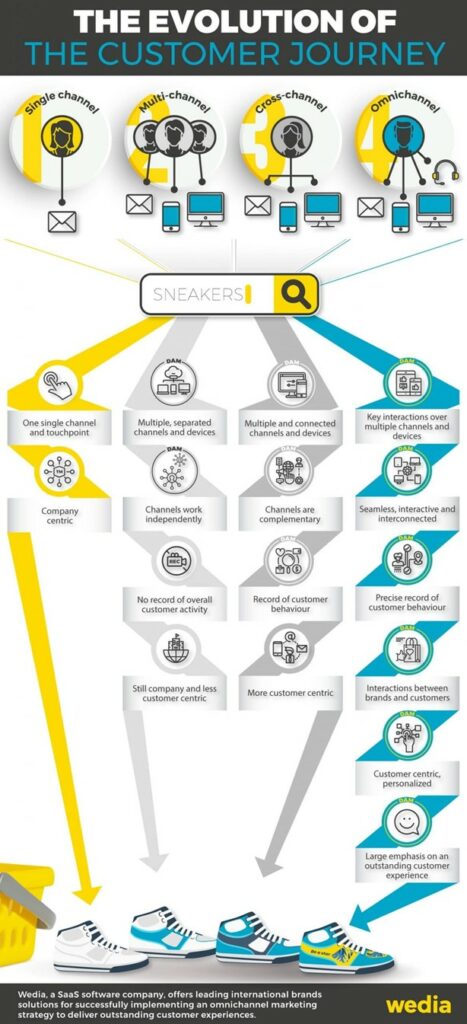
The complexity of customer behaviour and journeys in the omnichannel landscape is much
more complex than a single channel marketing.
Tracing the online and offline multi-channel journey is necessary to uncover the crucial
touchpoints and determine methods to simplify and improve them. Therefore, you must
ensure everything in real-time fits together without any problems and awareness.
For example, after customers sign up for a lead generation form to receive a special offer,
your email could include the discount code and personalised product suggestions.
Clicking on any suggested items would direct the customer to a page featuring your latest
products. Also, to keep them engaged, consider using retargeting advertisements for their
follow-up.
Remember that an omnichannel approach means utilising multiple journeys (social media)
in a single event. But the most important thing is to know how to let each channel perform
well on itself, potentially directing customers to another channel and making a purchase.
MATCH your content to your chosen marketing channel
Now you know that utilising omnichannel strategies includes various communication
systems (social media) for you to pick from. Also, for effective omnichannel marketing, you
must know the channel you want to prioritise and which device your target audience
prefers. It makes sense to put your attention to these channels.
For example, in the 25-40 range, women like to check marketing emails more than text
messages or push notifications on social media. So, if you target them incorrectly, you will
waste your money and time. In addition, there may be more damage if they told their
friends that they consistently got irrelevant information from your company.
Next, making your content match your chosen marketing channel is crucial. Such as
influencer marketing videos suit the most while you promote in TikTok or YouTube
channels.
Remember, omnichannel marketing is not only copying and pasting information in different
channels. Instead, it adapts your messages to your channel, convincing customers to buy
your products.
By conducting surveys or feedback to understand user preferences while developing your
campaign, you gain insight into what types of content perform best on each channel and
what priorities you should put in different channels, enabling you to adjust future content
accordingly.
Offer customer support
You can invest in the latest strategies and technologies, but customers are more likely to
leave if you have poor customer service.
Based on Zendesk findings, 50% of consumers will switch to a competitor after a single
negative experience, and 80% will do so after multiple poor experiences. Customer
service is the main reason customers leave and takes their business to a competitor.
Furthermore, customer service is the main reason customers leave and take their
business to a competitor.
Hopefully, you do not overlook this important factor. That is why when you integrate
omnichannel marketing into your strategy, remember to enhance your customer support in
each channel.
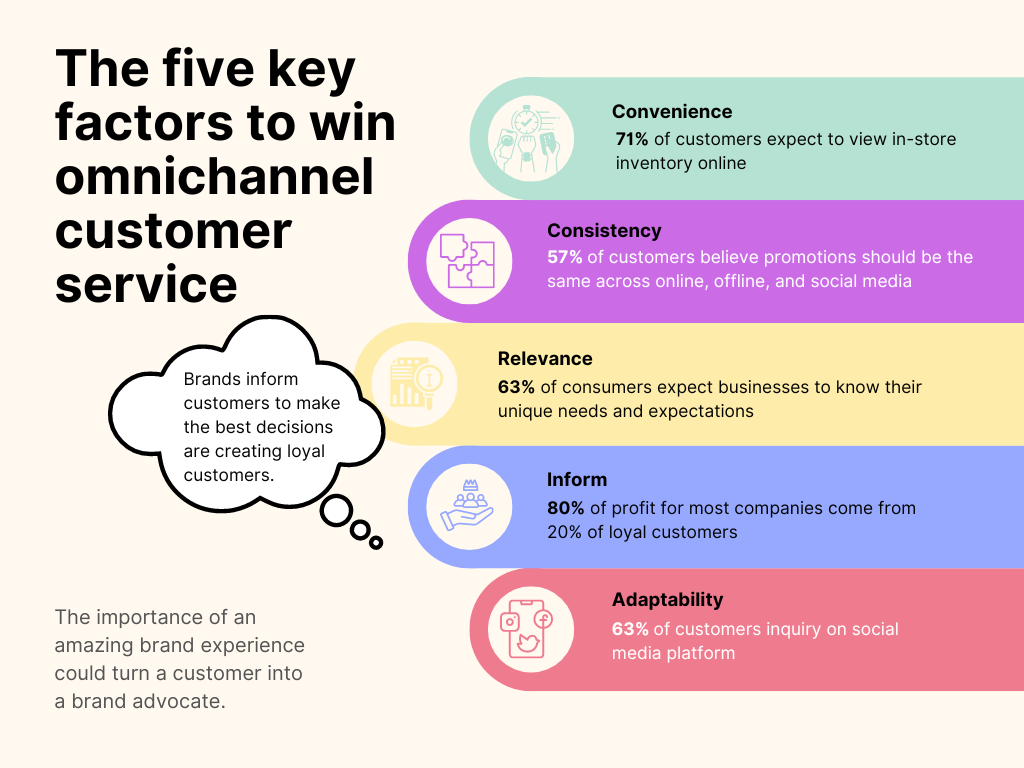
Make sure your staff can handle premium customer service in multiple channels without
sacrificing quality. For example, you could offer customers a personal touch to make a
phone call or even write a letter to you.
MEASURE your performance
There will always be a new trend and a new strategy in omnichannel marketing for you to
learn and adapt to your company model.
To maintain success, you should consistently check your process by collecting and
evaluating customer data and feedback. Instead of putting every penny equally in every
channel, you should check the customer data because every secret will reveal how
customers want you to treat them.
LEVERAGE with MarTech
Quantitative metrics across disjoined channels can only tell you so much about customers. This is where 𝐚𝐝𝐯𝐚𝐧𝐜𝐞𝐝 𝐀𝐈 𝐌𝐚𝐫𝐭𝐞𝐜𝐡 𝐩𝐥𝐚𝐭𝐟𝐨𝐫𝐦𝐬 come into their own. They make it easier for marketers to really make use of Omnichannel marketing for better CX.
Check out these brands that are killing it with their omnichannel marketing strategies:
Here are some major players that seize the opportunities of a great omnichannel strategy
and hit all their goals. Utilise these brands for inspiration as you hop on the omnichannel
train:
1. Amazon
Amazon offers a seamless shopping experience across its website, mobile app, and
physical stores. They use data and technology to provide personalised recommendations
and offers, making the shopping experience convenient and tailored to each customer’s
needs.
Moreover, they manage inventory across all channels to ensure that the products you want
are available regardless of where you shop.
They also offer fast and reliable shipping options and easy returns, making the entire
customer journey effortless. In addition, there is no need to fear that your package will
disappear because you can keep tabs on its location and determine when it will arrive.
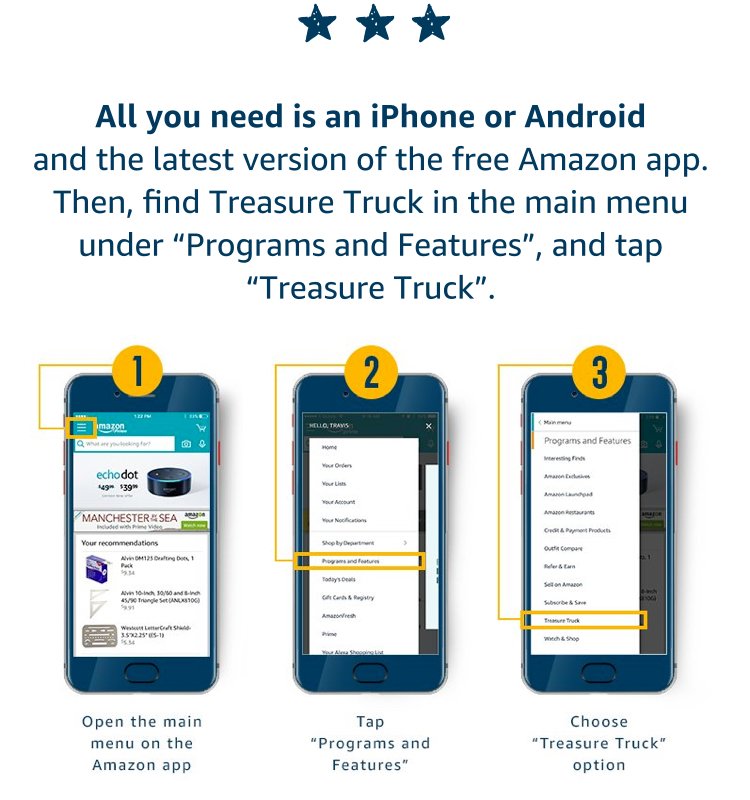
This seamless integration across channels has helped Amazon to build a loyal customer
base and become a leader in e-commerce.
2. Starbucks
Starbucks leverages omnichannel marketing by integrating its physical stores, mobile app,
website, and social media presence.
In case you are not a Starbucks fan, they launched their mobile app in 2009! It is
the go-to loyalty rewards app among big restaurant chains.
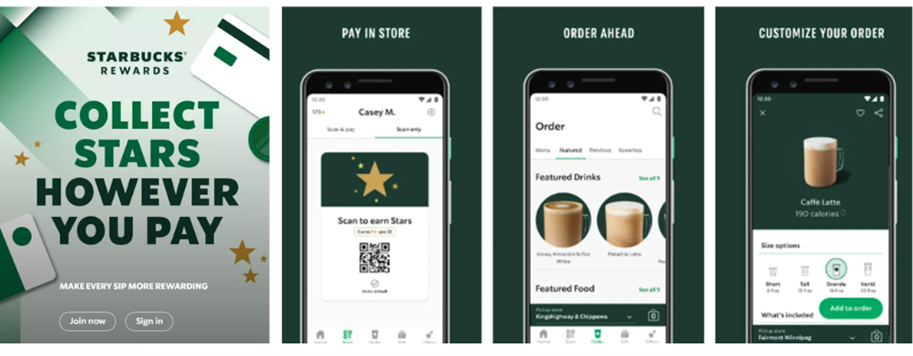
Why is the mobile app such a big hit? When you order on the app, it allows you to skip
lines in the store, and customers can earn reward points on the app for every purchase
they make.
Moreover, it remembers your special orders to personalise your experience and integrates
with geo-location features as to where the nearest Starbucks is. So that exact Starbucks
will prepare your order and be ready when you arrive.
Customers can redeem or reload their card at a physical store or any online platform,
whether a desktop or mobile device—the balance updates in real-time across all channels
and the customer’s profile. As a result, you could easily feel seamless integration of the
shopping experience; that is why so many loyal customers will not leave them.
3. Alibaba Group
Alibaba Group is a multinational technology company based in China; it was founded in
1999 and has since become one of the largest e-commerce companies in the world. It has
been successful in omnichannel marketing, allowing customers to shop online and in
person.
Take Hema Supermarkets, for instance; shopping for food is usually dull. However, they
make the retail experience different. For example, they transformed the traditional store
into where customers can scan a QR code to know the product’s information and have
their orders delivered right to their doorstep in thirty minutes for free.

The amazing thing is the offering continues beyond that; Hema’s staff will even cook up
the groceries for customers to try before they buy!
They nail the process of letting customers feel the hands-on, immersive, and fun shopping
experience.
How important is it for global brands to shape their omnichannel strategy around individual market needs?
Companies need to understand that there’s no “one size fits all” strategy exists. Every market has its own unique cultural, societal, and economic factors that can greatly impact customer behaviour and preferences.
For example, some markets may have a strong preference for in-store shopping experiences, such as Japan. It’s known for its strong culture of brick-and-mortar retail, some of the stores would offer you two different colours of baskets so you could choose do you want to be assisted and recommend your items.

On the other hand, China is a leader in mobile commerce, based on new PayPal surveys around 96% of consumers in China use their smartphones to shop online, outpacing other markets by 30%. Chinese e-commerce platforms are constantly innovating to provide new experiences to engage consumers. Also, the UK is also seeing a growing trend towards mobile commerce, with consumers increasingly turning to their smartphones for shopping convenience.
It is crucial for companies and marketers to recognise the various factors that can sway consumers to purchase one product over another, and all these factors play significant roles in this decision-making process.
Consumers are faced with a multitude of options every day, and they tend to opt for products that cater to their specific needs and requirements. Hence, companies that pay close attention to the factors that influence consumer behaviour and tailor their products to individual market needs are more likely to succeed in the long run.
To put it simply, your companies need to focus on understanding and satisfying the unique needs of your target market to gain a competitive advantage. Market research can’t be over-emphasis on this occasion, the more you research the more you will understand your market behaviour.
However, an omnichannel strategy that takes into account local market needs will also help global brands to stand out in a crowded marketplace and differentiate themselves from their competitors.
Take localisation for example, brands can tailor their omnichannel strategy to the local market by adapting their messaging, marketing campaigns, and product offerings to reflect local cultural, social, and economic factors. It can also help to build brand loyalty and enhance long-term relationships with customers.
In short, by shaping your company’s omnichannel strategy around individual market needs, global brands can improve customer satisfaction, increase sales, and gain a competitive advantage.
When to rethink your omnichannel strategy?
Staying ahead of the game in the ever-changing business world can be tough, but having an effective omnichannel strategy is a must for companies that want to meet their customers’ evolving needs and stay competitive. However, as technology and customer preferences shift, it’s important for companies to step back and reevaluate what it means to be omnichannel and how they should approach emerging channels.
This will help ensure that they are always on top of the latest trends and ready to provide the best possible customer experience. Let’s take a closer look at when a company might need to rethink its omnichannel approach.
New technology emerges
The rapid pace of technological innovation means that new channels and platforms are constantly emerging. Companies need to keep up with these changes and reevaluate their approach to new channels to ensure they are taking full advantage of new technologies and meeting customer expectations.
For example, Gymshark is a force that should be recognised when it comes to TikTok. Having embraced and integrated their social media as their main driving force to customers, they adopted TikTok a perfect timing as well. Every video they post, it can get 5 to 3000 likes and engagement per video, following a boost of 1.5 million followers into their customer base.
Changing customer behaviour
Companies should regularly check for market trends by conducting research, changes in customer behaviour and monitoring industry news. If your customer behaviour and preference change when you analysed the data, is time to adapt your strategy in omnichannel to evolve and meet their needs.
Based on McKinsey reports, an omnichannel strategy that prioritises the most effective interaction models, rather than providing a broad range of interaction options, can enhance resolution times, create memorable and positive experiences for customers, and boost employee satisfaction and success rates.
Such as customers to start to prefer help from voice assistants or chatbots, it’s essential to implement these new technologies to the site and adjust your approach. Also, customers have numerous options for reaching out to service or sales organisations, so it’s essential to be accessible through the channels that they prefer.
Today, the options go beyond just voice, chat, or email and include mobile messaging as well. And with the continued advancement of technology, this trend is expected to continue and expand.
Future of omnichannel marketing
Many companies already recognise the significance of an omnichannel approach;
however, executing it has been challenging. However, leading companies have a distinct
outlook and have invested in omnichannel capabilities with the customer as the centre of
their operations.
Companies like Amazon, Starbucks, and Apple have set the standard for omnichannel
experiences, and smaller businesses must adapt to remain competitive. As customer
expectations continue to increase, omnichannel strategies will continue to play a big role in
shaping the customer experience.
More resources
The Most Essential China Digital Marketing Strategies to Enter Chinese Markets in 2022
FAQ
Omnichannel marketing only works to enhance contact centre
This myth is definitely not true. Omnichannel approach is not limited to just improving the contact centre. It is a comprehensive strategy aimed at providing a seamless and consistent customer experience across all touchpoints, channels and stages of the customer journey. The goal is to let customers feel a consistent and integrated experience without trouble.
Is the omnichannel marketing approach expensive to implement?
The cost can vary depending on a number of factors, such as the size and complexity of the business and the number of channels and touchpoints being integrated. However, the benefits can easily outweigh the costs, such as increased customer engagement, loyalty, and satisfaction.
What are the challenges you might face?
The top challenges of omnichannel include integrating different systems, ensuring all customer data from all channels are consistent, and measure the success of an omnichannel approach and identifying areas for improvement. These arise from the need to coordinate and integrate multiple systems, channels, and touchpoints to deliver a seamless and consistent customer experience.